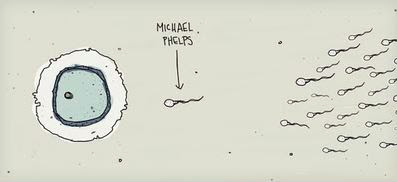Sperm Meets Egg – Not all it’s cracked up to be!

Cheers, dear readers,
Thank you sincerely for taking the time to follow us on our journey with infertility. We are just one couple sharing our story in a sea of tens of thousands of others struggling to navigate the murky waters of infertility. We hope that by sharing our story, we help other couples and individuals find some much needed comfort and solace that they too can get through the diagnosis and subsequent treatment for the disease of infertility.
Last I left you on our chronological journey of infertility, I had just undergone my egg retrieval for our hormone-induced IVF procedure. We were a bit disheartened that the dear doctor was only able to retrieve five useable eggs from our weeks of hard work, injections and anxiety of prepping my body and ovaries for the momentous occasion of stimulation followed by egg aspiration (egg retrieval). It was an odd moment, walking around in the world with my eggs outside of my body in a petri dish somewhere, being fertilized by Eric’s sperm. Because Eric was unfortunate enough to suffer from low sperm motility as well as low sperm count, our fertility clinic needed to use a process called ICSI to hand-select the best looking sperm for fertilization. (In other words, one without two heads, which seemed to swim relatively straight indicating some normalcy. In this process, I believe “speed” was not really an issue, since the little guy was going to be literally injected into my egg. I wonder if that is a traumatic experience for the sperm? Hmmmm).
Let me take a moment here to help shed some light on the ICSI term and process. In the fertility treatment world, ICSI stands for intracytoplasmic sperm injection. It is a technique that can be used as part of an in vitro fertilization (IVF) treatment to help you and your spouse / partner conceive a child. ICSI is known as the most successful form of treatment for men who are infertile and it is used in nearly half of all IVF treatments. ICSI only requires one sperm, which is injected directly into an egg. The fertilized egg (embryo) is then transferred to the uterus (womb).
As I alluded to above, during ICSI, the sperm does not have to travel to the egg or penetrate the outer layers of the egg. The embryologist does that for you. This means that it can help couples where the man’s sperm:
— can’t get to the egg at all (which was the case for us, as I have one blocked fallopian tube, and Eric’s sperm were few, slow, and not all perfectly shaped. We liked to joke that Eric’s two-headed, dim-witted sperm were slowly swimming in circles and hitting a wall, and thus getting nowhere fast! Hey, if you can’t laugh, we’d all go insane, right?)
— can get to the egg – but for some reason can’t fertilize it (we had no idea if this was the case, because as far as we all knew, Eric’s sperm never made it naturally to my eggs at all — but if they did, they certainly didn’t seem to know what to do once they got there).
So ICSI is likely to be recommended if your spouse / partner has:
— A very low or zero sperm count (Eric had low sperm count for reasons that the doctor could not explain)
— A high percentage of abnormally shaped sperm. This can result in poor motility, which means the sperm can’t swim well (Thus the jokes about Eric’s two-headed sperm that were swimming in circles, so CHECK on that one!)
— Sperm that can’t be ejaculated but can be collected from the testicles or from the duct where sperm is stored (epididymis). This may be needed if your spouse / partner has had an irreversible vasectomy or injury (Luckily, Eric did not have this problem. Yay, one embarrassing issue that we did NOT have! Whoop! Gotta look on the bright side where you can!)
—Problems with getting an erection and ejaculating, due to spinal cord injuries or diabetes, for example. (“NOT IT” again. Whew! Eric simply had to do the “standard” – and soooo not sexy – ejaculate into a cup on the same day as the eggs are collected, in an equally not sexy room at the fertility clinic. Ew. Just EW! I feel for the guy!)
If you have had unsuccessful IVF, you may move on to ICSI if not enough eggs could be retrieved, or if eggs retrieved for IVF were not successfully fertilized. (Again, this was us, as only five eggs were retrieved in our hormone induced IVF cycle. And also during our one natural cycle IVF procedure, my one egg did not fertilize AT ALL – even while using the ICSI process, which we had to pay extra for).
After my eggs were retrieved and Eric offered up his sperm, the embryologist then isolates individual sperm (the non-two-headed, decent looking ones) in the lab and injects them into your individual eggs. Two days later, the fertilized eggs hopefully become balls of cells called embryos, if you are one of the lucky ones. Then if you are REALLY lucky, the doctor transplants one or two embryos into your uterus and through your cervix using a thin catheter. Again, the sexiness of this process is under-whelming to say the least. It is highly UN-sexy, UN-fun, and UN-happy-making going through the procedures. It is also frightening as well as embarrassing, and lastly, time-consuming! It is NOT for the faint of heart. But go through it we must, if we wanted a shot (pardon the pun) of having our own biological child – which we were desperately hoping for – a little “Eric” or “Cathy” – our own child that came from US.
Please join me next week to hear more about my personal journey down the infertility path. I look forward to speaking with you. And I wish you the best on your journey.
Warm regards,
Cathy



